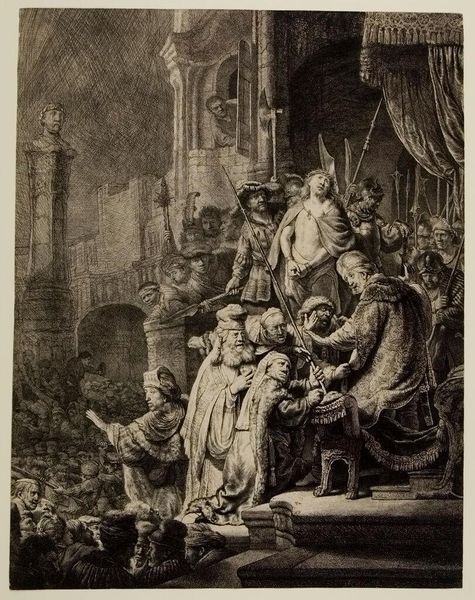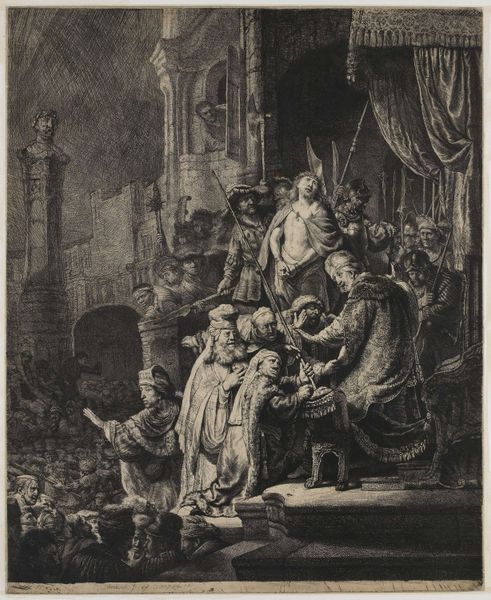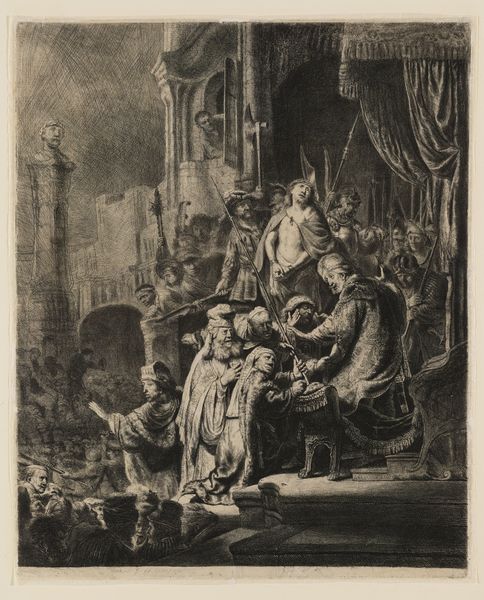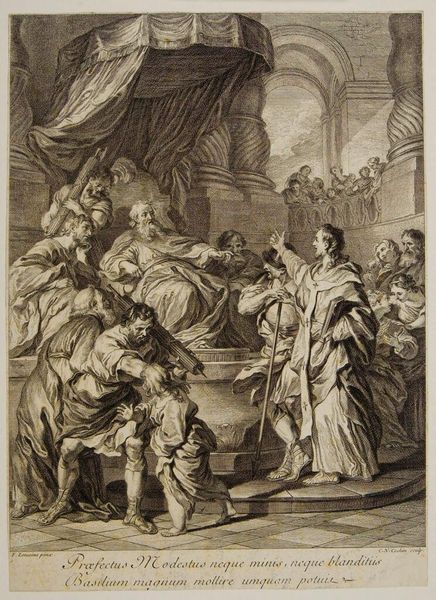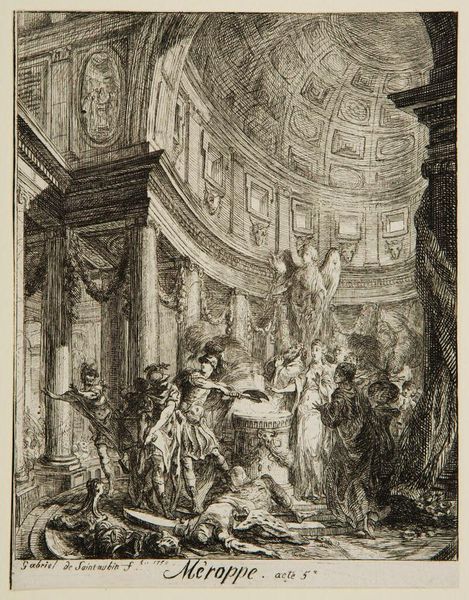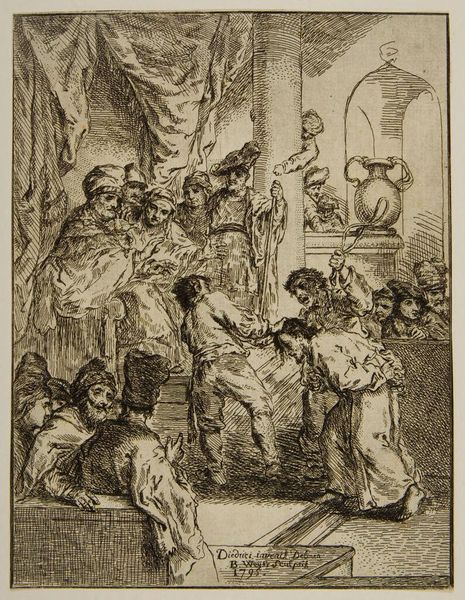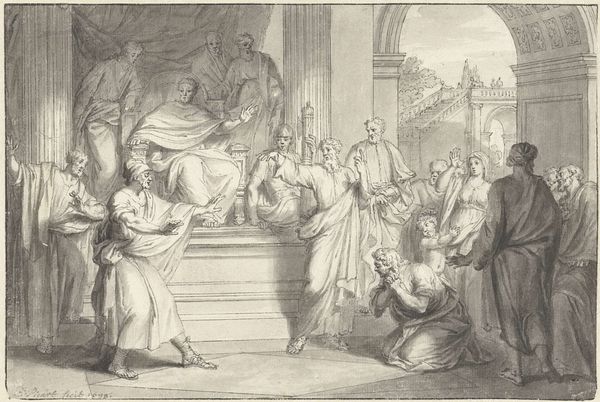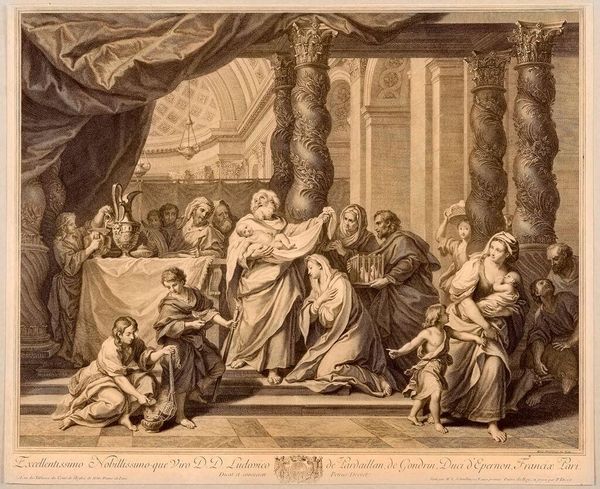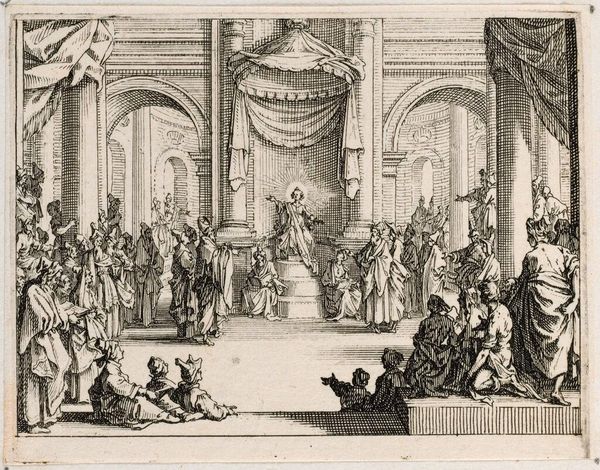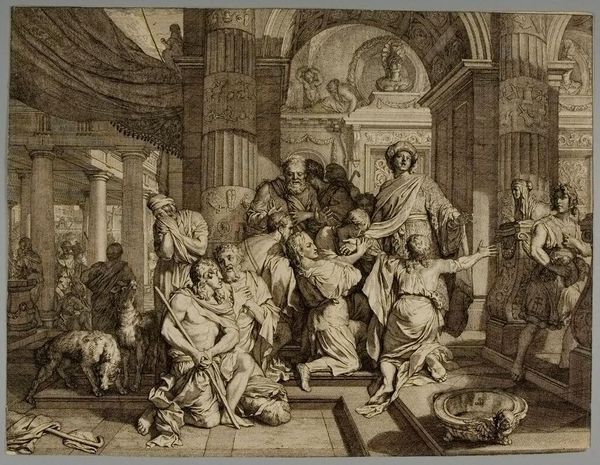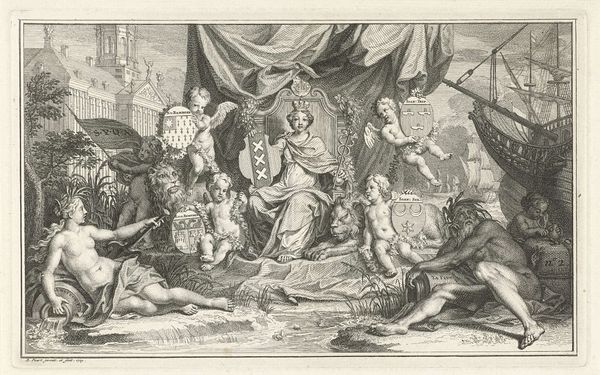
drawing, print, etching
#
drawing
#
narrative-art
#
baroque
#
dutch-golden-age
# print
#
etching
#
figuration
#
history-painting
Copyright: Public Domain: Artvee
Rembrandt van Rijn created this print, "Christ before Pilate," using etching and drypoint, a process of incising lines into a metal plate. The matrix is copper, which Rembrandt would have sourced from mines in Sweden or Hungary. The image is made by covering the plate with an acid-resistant ground, then scratching away the lines of the composition. The plate is then immersed in acid, which bites into the exposed metal. For the drypoint lines, Rembrandt would have used a sharp needle to directly score the plate, creating a burr – a ridge of metal – which holds additional ink, resulting in a velvety, dark line. This material quality is visible most clearly in the deep shadows and textures of the fabrics. Rembrandt was a master of these printmaking techniques, pushing their expressive possibilities. Through the skilled application of labor, he elevated a relatively commonplace medium to the status of high art. In doing so, he collapses traditional distinctions between craft and fine art.
Comments
No comments
Be the first to comment and join the conversation on the ultimate creative platform.
